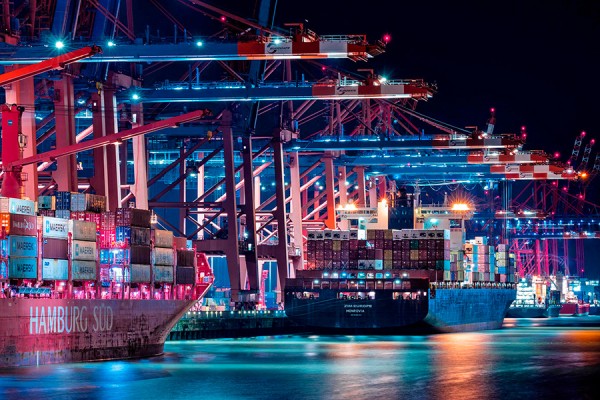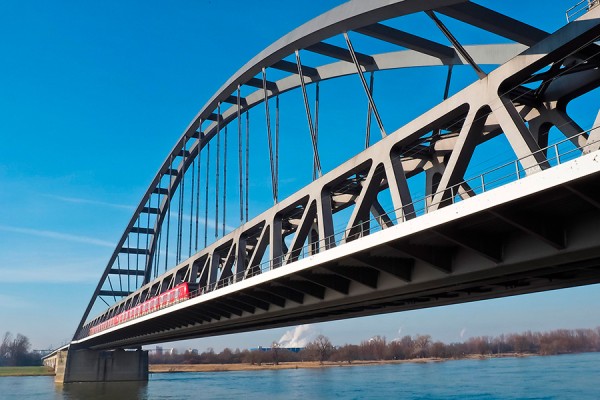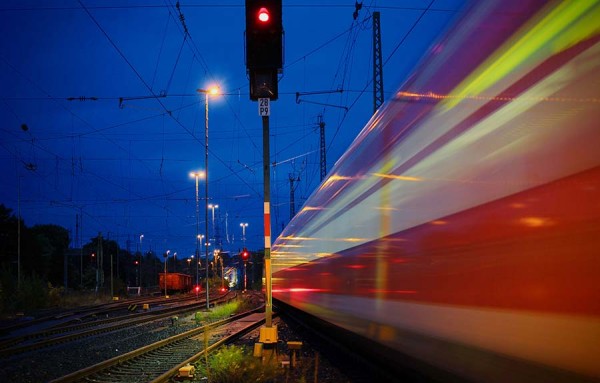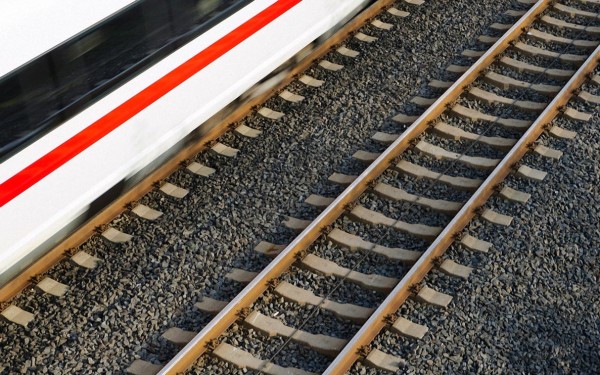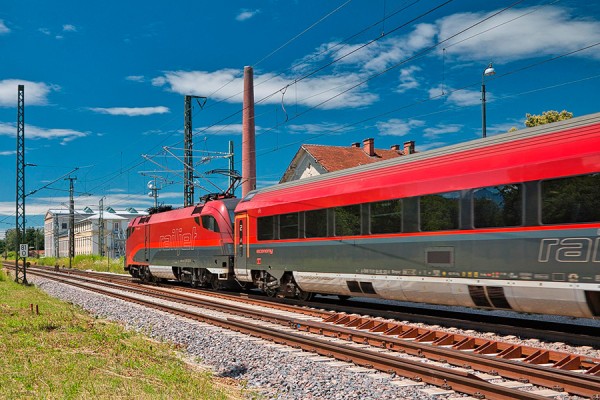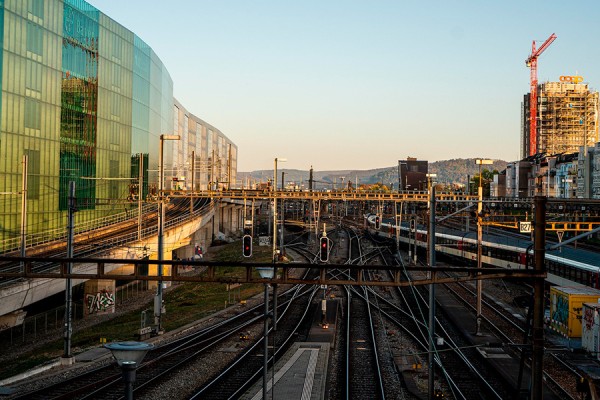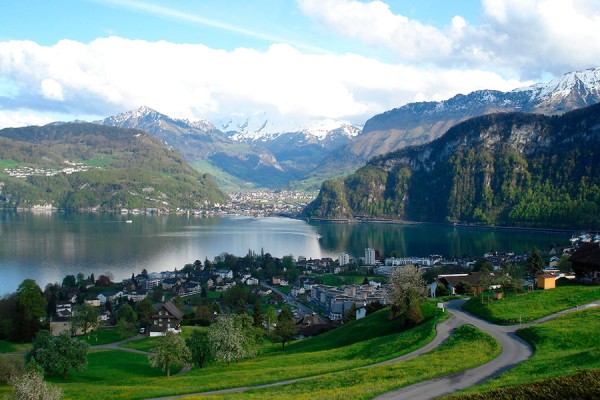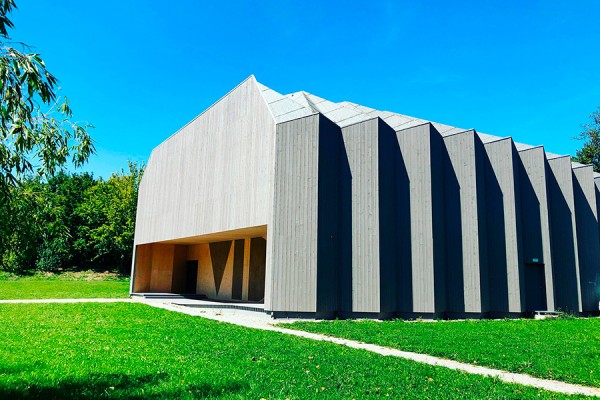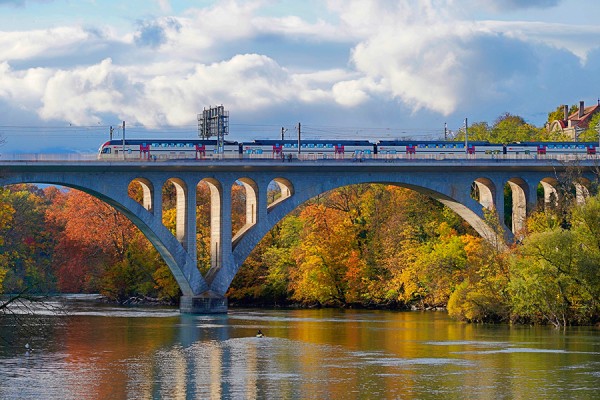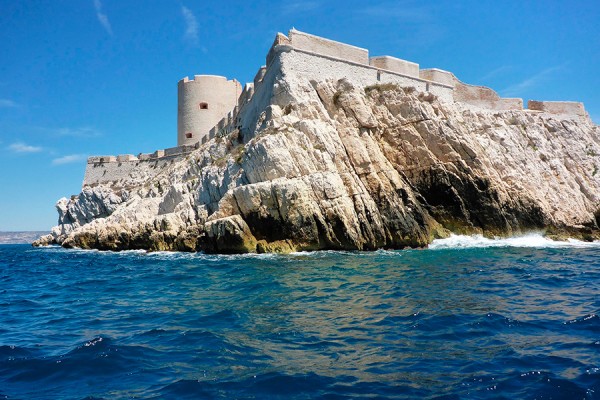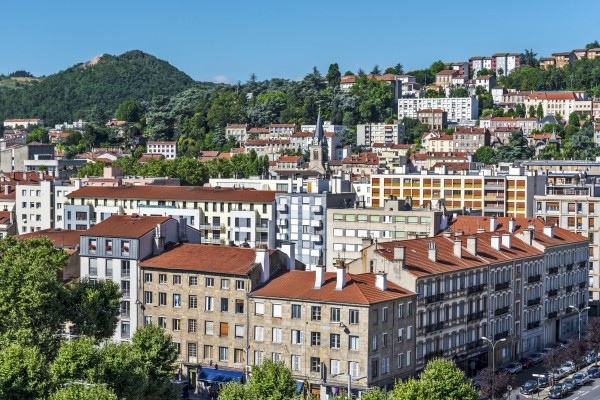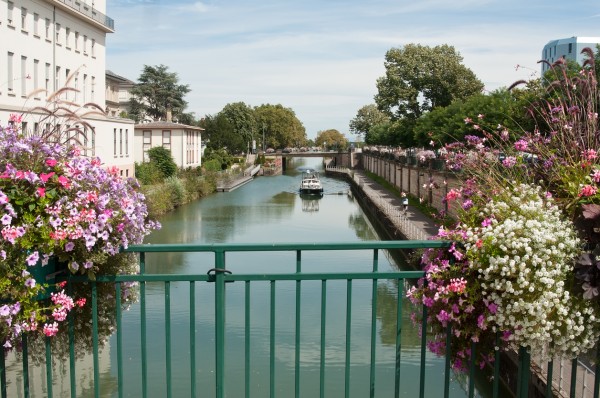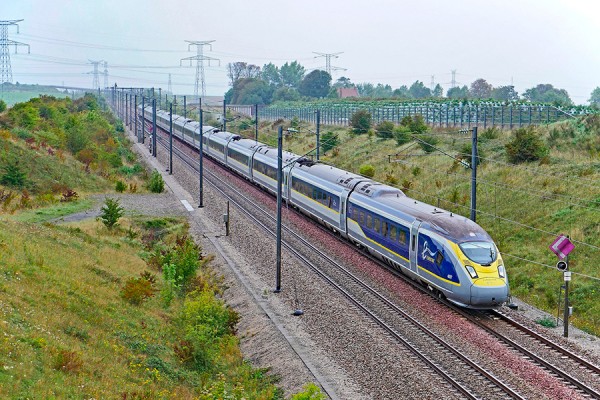Consulting: A selection of projects from 2024
Germany
In 2018, the Bavarian state government launched the “Munich Region Rail Expansion” program to expand the rail infrastructure and thus make local rail passenger transport, particularly the S-Bahn, more attractive. The feasibility study began with 26 individual schemes to be examined (known as "U-meaures") and has now been completed after six years. The program was designed to be transparent from...
Continue reading
Germany

Bavarian State Ministry of Housing, Construction, and Transport (StMB): Feasibility study for the “Munich Region Rail Expansion” program
In 2018, the Bavarian state government launched the “Munich Region Rail Expansion” program to expand the rail infrastructure and thus make local rail passenger transport, particularly the S-Bahn, more attractive. The feasibility study began with 26 individual schemes to be examined (known as "U-meaures") and has now been completed after six years.
The program was designed to be transparent from the outset and was developed in collaboration with DB InfraGO AG and other key stakeholders. Regional representatives and specialist agencies were regularly informed about the current status of the project in working groups and dialogue forums. Suggestions from the region and specialist agencies were taken up and evaluated as part of the expert work. Ultimately, 44 schemes in total were examined, resulting in the project being extended from four to six years. Upon completion of the feasibility studies, the experts recommended 60% of the U-measures for further pursuit: 26 measures have either a positive benefit-cost indicator or at least sufficient viability. Only 10 schemes (22%) received a negative recommendation from the experts. A small proportion of the U-measures (18%) were not or could not be evaluated.
The Bavarian State now intends to press ahead with the schemes that received a positive assessment within the limits of the available budget and to agree on the next planning steps with DB. In doing so, the schemes already being implemented and the U-measures recommended for further pursuit are to be organised in a logical and manageable order.
The feasibility studies for the ‘Nuremberg S-Bahn Expansion Programme (AusbauNü)’ describe the key points for a possible future local rail transport design, particularly for the S-Bahn in the Nuremberg region. In addition to numerous projects that are already in the concrete planning or implementation phase, a further 38 projects are currently being examined as part of the AusBüNü programme to ass...
Continue reading
Germany


Bavarian State Ministry of Housing, Construction and Transport (StMB): Feasibility studies ‘Nuremberg S-Bahn expansion programme’
The feasibility studies for the ‘Nuremberg S-Bahn Expansion Programme (AusbauNü)’ describe the key points for a possible future local rail transport design, particularly for the S-Bahn in the Nuremberg region. In addition to numerous projects that are already in the concrete planning or implementation phase, a further 38 projects are currently being examined as part of the AusBüNü programme to assess their transport benefits, structural feasibility and economic viability. These projects have been agreed in advance with the region. These include new suburban railway stops, new suburban railway lines, service expansions, electrification, the use of battery-hybrid vehicles and route extensions. The projects are assessed using a standardised evaluation procedure. Changes in demand based on demand-oriented service concepts show which projects should be pursued in relation to infrastructure and operating costs.
The initial results were presented to the public in October 2024 in Nuremberg as part of a dialogue forum. Numerous projects achieved a cost-benefit ratio of at least 1.0. This is a prerequisite for receiving federal funding for subsequent implementation.
The following projects are recommended for further consideration:
– Introduction of a half-hourly suburban railway service to Markt Erlbach
– Introduction of a half-hourly S-Bahn service to Cadolzburg
– Overall concept for the western sector (comprehensive review with S6 + introduction of S-Bahn services to Markt Erlbach and Cadolzburg)
– Introduction of a half-hourly S-Bahn service to Gräfenberg
– Introduction of a half-hourly S-Bahn service to Nuremberg's Nordring with an extension to Gräfenberg
– Extension of the S-Bahn from Roth to Hilpoltstein
– New line between Hilpoltstein and Allersberg with extension of the S-Bahn from Allersberg to Hilpoltstein
Further projects are currently being developed and will be presented at a later date.
To supplement and relieve the existing railway crossing of the Elbe between Hamburg-Harburg and Hamburg Central Station, … a consortium comprising Tutech Innovation GmbH, Obermeyer Infrastruktur GmbH, Intraplan Consult GmbH, TTS TRIMODE Transport Solutions GmbH and SMA was tasked with investigating a new crossing in the western part of the city. The study produced 14 preliminary variants with dif...
Continue reading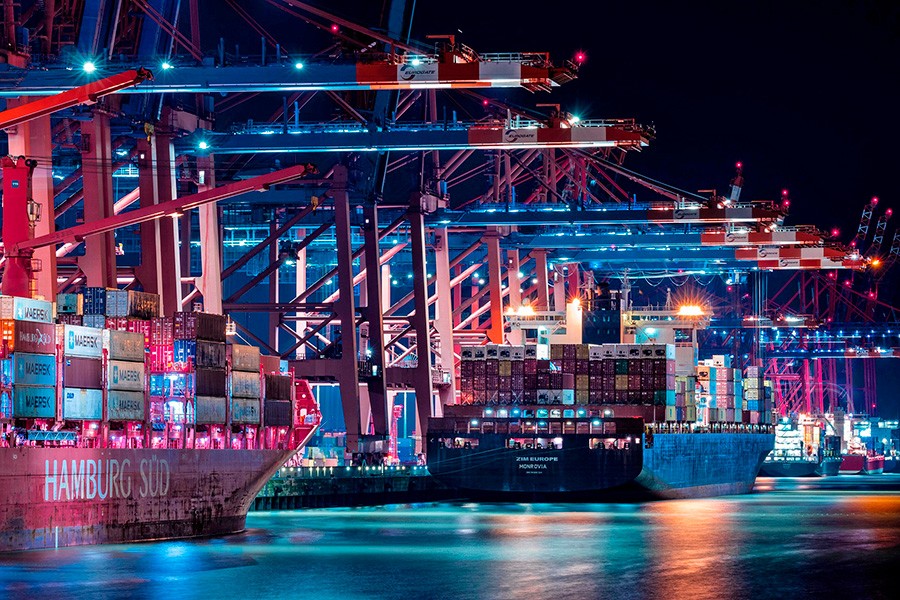
Germany


Federal Ministry of Digital and Transport: Study on the feasibility of a western crossing of the Elbe in Hamburg
To supplement and relieve the existing railway crossing of the Elbe between Hamburg-Harburg and Hamburg Central Station, … a consortium comprising Tutech Innovation GmbH, Obermeyer Infrastruktur GmbH, Intraplan Consult GmbH, TTS TRIMODE Transport Solutions GmbH and SMA was tasked with investigating a new crossing in the western part of the city.
The study produced 14 preliminary variants with different assumptions regarding the type of traffic and the route alignment. The findings from the evaluation of these preliminary variants enabled two detailed variants to be identified. They show that the target timetable used as a reference case, the Germany-wide integrated timetable with its planned long-distance and regional transport services, already meets the currently forecast demand, which is concentrated on Hamburg Central Station. The capacities planned in the target timetable for Germany-wide integrated transport can also cover the forecast demand for freight transport.
The additional services made possible by the additional western Elbe crossing generate significant transport benefits. Local transport in particular will see an increase in passenger numbers thanks to a new S-Bahn service and additional stops. Nevertheless, it is not possible to justify the high construction costs of a new western crossing, which would amount to between €3.2 billion and €5.0 billion depending on the variant. The investments significantly exceed the achievable benefits: according to the Federal Transport Infrastructure Plan methodology, both options have a benefit-cost ratio of 0.3. It is not expected that optimisation measures (e.g. changes to the service, reduced investment costs) will result in a benefit-cost ratio greater than 1.0, which is a prerequisite for federal funding.
The additional transport axis examined, which is not focused on strengthening the largest transport links, is therefore not economically viable. The experts conclude that further development of this western crossing of the Elbe in Hamburg is not recommended as long as the boundary conditions, such as traffic forecasts and urban development, do not change significantly.
The further development of local rail passenger transport (SPNV) in Saarland is an essential component of the Saarland Public Transport Development Plan. This includes the expansion of the existing regional rail network into an S-Bahn network, the reactivation of existing rail lines and transport stations for local passenger transport, and the complete or partial construction of new rail lines and...
Continue reading
Germany


Saarland Ministry of the Environment, Climate, Mobility, Agriculture and Consumer Protection (MUKMAV): Feasibility study on the reactivation of railway lines for passenger transport in Saarland
The further development of local rail passenger transport (SPNV) in Saarland is an essential component of the Saarland Public Transport Development Plan. This includes the expansion of the existing regional rail network into an S-Bahn network, the reactivation of existing rail lines and transport stations for local passenger transport, and the complete or partial construction of new rail lines and transport stations for local rail passenger transport.
SMA has collaborated with Schüßler-Plan Ingenieurgesellschaft mbH and ZIV – Zentrum für integrierte Verkehrssysteme GmbH to produce a qualitative feasibility study, including a cost-benefit analysis, for the reactivation of railway lines and their integration into the overall local public transport system in Saarland. The study covers the following five lines:
– "Rosseltalbahn" (Saarbrücken - Großrosseln)
– "Bisttalbahn" (Saarbrücken/Völklingen - Überherrn)
– Former "Merzig-Büschfelder railway" (Merzig - Niederlosheim)
– "Primstalbahn" (Dillingen/Saarlouis - Lebach-Jabach/Wadern)
– "Blisttalbahn" (Homburg - Blieskastel)
The following issues were considered as part of the feasibility study:
– Analysis of the current situation
– Development of possible operating concepts
– Determination of the necessary infrastructure, including cost estimates
– Calculation of transport demand with modal shift effects
– Calculation of the expected benefit-cost indicator using the standardised method for evaluating investments in local public transport infrastructure (2016+ version)
SMA's work within the consortium focused on developing operational concepts for several planning scenarios per route, including bus concepts. The studies were closely coordinated with MUKMAV and a project working group. For four of the five routes, a positive cost-benefit indicator greater than 1.0 was determined, making them eligible for funding.
In 2024, SMA continued to support the KC ITF NRW and the three regional public transport authorities in North Rhine-Westphalia (go.Rheinland, VRR and NWL) in the further development of the integrated timetable for the state of North Rhine-Westphalia. To support the KC ITF NRW, SMA formed a working group with Quattron GmbH (formerly VIA Consulting & Development GmbH) from Aachen. In 2024, the KC I...
Continue reading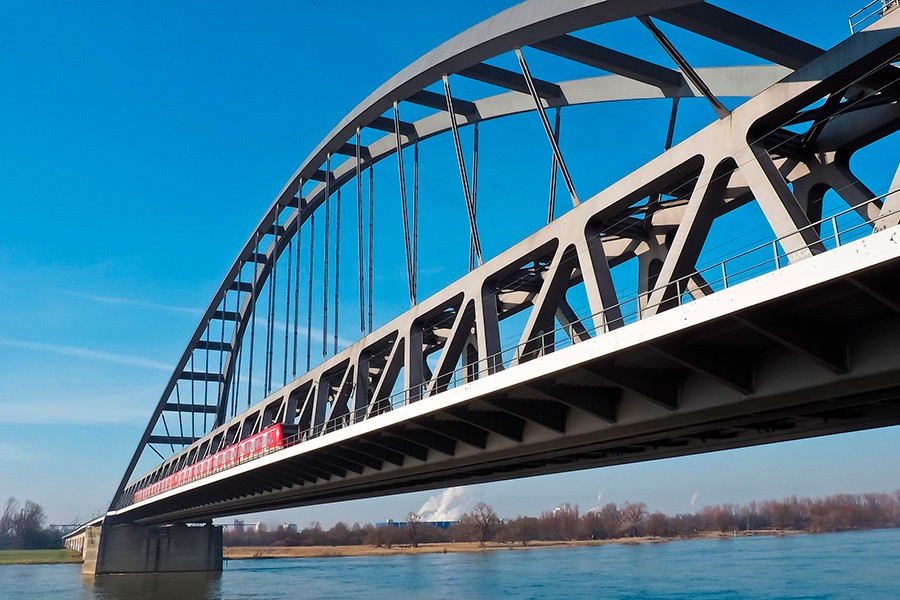
Germany

Consultancy services provided to KC ITF NRW and the NRW authorities
In 2024, SMA continued to support the KC ITF NRW and the three regional public transport authorities in North Rhine-Westphalia (go.Rheinland, VRR and NWL) in the further development of the integrated timetable for the state of North Rhine-Westphalia. To support the KC ITF NRW, SMA formed a working group with Quattron GmbH (formerly VIA Consulting & Development GmbH) from Aachen.
In 2024, the KC ITF NRW focused, among other things, on creating a robust timetable concept by developing quality-enhancing measures to address missing resources in terms of personnel and infrastructure availability. To ensure long-term improvements in operational quality in target network planning, SMA supported the timetable robustness test for the NRW 2040 target network, which is expected to be carried out by DB InfraGO AG by the end of 2025.
For a perspective extending into the 2030s, a possible reuse of the current industrial railways in the Rhenish lignite mining area for interregional rail freight and regional transport was also investigated, and the operational advantages and disadvantages of various connection points to the existing network were identified.
On behalf of the authorities responsible in North Rhine-Westphalia, SMA has carried out various studies on the operational feasibility of reactivating lines in local rail transport (e.g. Recke – Rheine, former Moerser Kreisbahn, Wiehltalbahn).
In the go.Rheinland area, another focus of the work was on supporting the detailed planning and further development of the Rhineland S-Bahn and examining possible storage locations for the vehicles of the future S-Bahn network. In addition, studies were carried out for the gradual commissioning of the planned infrastructure upgrades on the Left Rhine Line and the Eifel Line.
The studies for the VRR focused on the future S-Bahn network in Düsseldorf. Depending on the commissioning of planned infrastructure upgrades, concepts for a gradual increase in service frequency to every 15 minutes were developed that can be implemented in an upwardly compatible manner.
The results of the work in North Rhine-Westphalia have been presented and discussed in working groups and committees. The work was supplemented by annual monitoring of the service volume and updating of the current network map.
The work will continue in the current year.
By 2040, the Free State of Bavaria wants to end the use of diesel vehicles in regional rail passenger transport (SPNV). As it is unlikely that the rail network will be fully electrified by then, this will require the use of alternative drive technologies. On behalf of the Bavarian Railway Company (BEG), a consortium consisting of Enotrac AG, SMA and Partner AG and Hynes GmbH has examined how diese...
Continue reading
Germany


Bayerische Eisenbahngesellschaft (BEG): Investigation into the technical requirements for the use of battery-powered hybrid vehicles in the Allgäu region
By 2040, the Free State of Bavaria wants to end the use of diesel vehicles in regional rail passenger transport (SPNV). As it is unlikely that the rail network will be fully electrified by then, this will require the use of alternative drive technologies. On behalf of the Bavarian Railway Company (BEG), a consortium consisting of Enotrac AG, SMA and Partner AG and Hynes GmbH has examined how diesel-powered regional rail lines in Swabia and western Upper Bavaria can be converted to locally zero-emission traction systems. The aim was to develop a concept that guarantees climate-neutral and robust operation in regional rail transport.
In a first step, SMA defined the sample timetables and created a netgraph. Based on the capacities specified by BEG, numerous vehicle rosters were drawn up as a basis for the next steps.
Enotrac and Hynes GmbH then developed an energy supply concept that enables robust operation with battery hybrid vehicles and at the same time determines the hydrogen infrastructure required for the use of a trimodal hydrogen-battery hybrid vehicle. Among other things, the general feasibility, the expected costs and a possible timetable for implementation were examined and evaluated.
The report showed that an additional hydrogen powertrain for the tilting trains would be very complex and involve high risks. The new tilting trains will therefore be procured as pure battery-powered vehicles and will be equipped with more powerful batteries instead of fuel cells. This means that not all of the infrastructure upgrades proposed in the report will need to be implemented. The development of a hydrogen supply infrastructure and some partial electrification measures can therefore be avoided.
The Deutschlandtakt is the federal government's guiding strategy for an efficient, reliable and attractive rail network of the future. The Deutschlandtakt target timetable shows which transport services are to be achieved in the long term and what infrastructure is required to do so. The Deutschlandtakt aims to better coordinate rail passenger transport services, reduce transfer and travel times,...
Continue reading
Germany


Federal Ministry for Digital and Transport: Update of the target timetable for the Deutschlandtakt / strategic implementation plan
The Deutschlandtakt is the federal government's guiding strategy for an efficient, reliable and attractive rail network of the future. The Deutschlandtakt target timetable shows which transport services are to be achieved in the long term and what infrastructure is required to do so. The Deutschlandtakt aims to better coordinate rail passenger transport services, reduce transfer and travel times, and create sufficient capacity for rail freight transport with short journey times. The result is a Germany-wide coordinated timetable with attractive, systematically scheduled train paths for the forecast freight transport as a strategic basis for infrastructure development. On this basis, the necessary expansion and new construction measures for the rail network are derived on the basis of the timetable.
SMA is supporting the work on the target timetable for the Deutschlandtakt both as part of the update and as part of the strategic implementation plan for the Deutschlandtakt (phasing).
The main task of updating the target timetable for the Germany-wide integrated timetable is to adapt the existing target timetable to the new traffic forecast for 2040. This will highlight any changes that need to be made to the existing service and infrastructure concept as a result of future traffic developments and show how the target timetable will be adjusted to reflect these new developments. This further development of the target timetable must also take into account local transport concepts of the federal states that have been updated in the meantime, as well as political objectives and the measures of the Investment Act for Coal Regions (InvKG). Work on updating the target timetable will be completed in 2025.
In order to implement the target timetable in stages and to involve all stakeholders in a binding manner, the Strategic Implementation Plan for the Germany-wide integrated timetable is being developed in parallel. This implementation plan consists of service concepts for the medium and long term, including the corresponding prioritised infrastructure packages and a standard process for the interaction of all implementation elements of the federal transport infrastructure plan relating to the Germany-wide integrated timetable. The result will be infrastructure expansion steps. Work on the strategic implementation plan is being carried out jointly with the companies ifok, Intraplan Consult GmbH and tts trimode GmbH. The work will continue in 2025.
As part of the KaZu Novum (capacity planning and allocation of the future) project, DB InfraGO AG is working on the development of coherent intermediate steps towards the target timetable for Germany in an industry-wide transparent planning process. In order to implement capacity planning and allocation that is as optimised as possible, with capacity distributed appropriately across the three mo...
Continue reading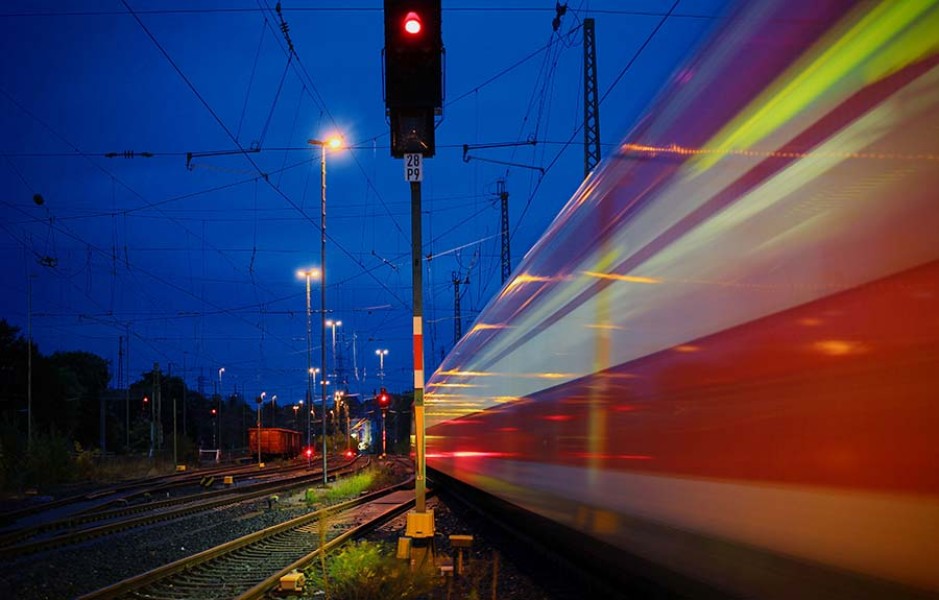
Germany



DB InfraGO AG: KaZu Novum - Creation of 2026/28 mKoK
As part of the KaZu Novum (capacity planning and allocation of the future) project, DB InfraGO AG is working on the development of coherent intermediate steps towards the target timetable for Germany in an industry-wide transparent planning process.
In order to implement capacity planning and allocation that is as optimised as possible, with capacity distributed appropriately across the three modes of transport (long-distance, local and freight), a hierarchical planning approach has been developed in collaboration with the market over the last few years. The approach is being transferred to the 2026/28 timetable horizon in the ongoing project for mKoK 2026/28.
The commissioning of the new Stuttgart 21 deep-level railway station and other infrastructure elements in the German railway network will trigger substantial service adjustments that will affect the entire German railway network. Due to these fundamental changes to the transport services, the medium-term concept for optimised capacity utilisation (mKoK) is being updated and rewritten for the 2026/28 timetable years. SMA's task here is to support DB InfraGO AG in the internal development, taking into account the mix of transport types in terms of timetable and processes within the framework of stakeholder management, and to phase in the service structure of the target timetable for the Germany-wide integrated timetable.
The technical work is being carried out in close cooperation with DB InfraGO AG using macroscopic and microscopic timetable tools implemented by Viriato MoD in combination with LaaS, taking into account DB's design rules with regard to buffer times, transition times, regular surcharges and construction surcharges. Since 2016, SMA has developed the Microscopy on Demand (MoD) concept, which supplements the Viriato software with access to microscopic services based on the official infrastructure model in this application. The MoD process significantly reduces the time required for microscopic validation compared to the previous method of transferring macroscopic planning completely to microscopic models and checking it there, because time-consuming and error-prone switching between systems is avoided.
As part of the expansion of the Stuttgart Digital Hub (DKS), the entire fleet of Stuttgart's S-Bahn (SBS) must be converted to ETCS within a defined period. This will reduce the number of vehicles available for scheduled services. Once converted, it will no longer be possible to couple the upgraded vehicles with the existing fleet that has not yet been upgraded. On this basis, SMA has developed u...
Continue reading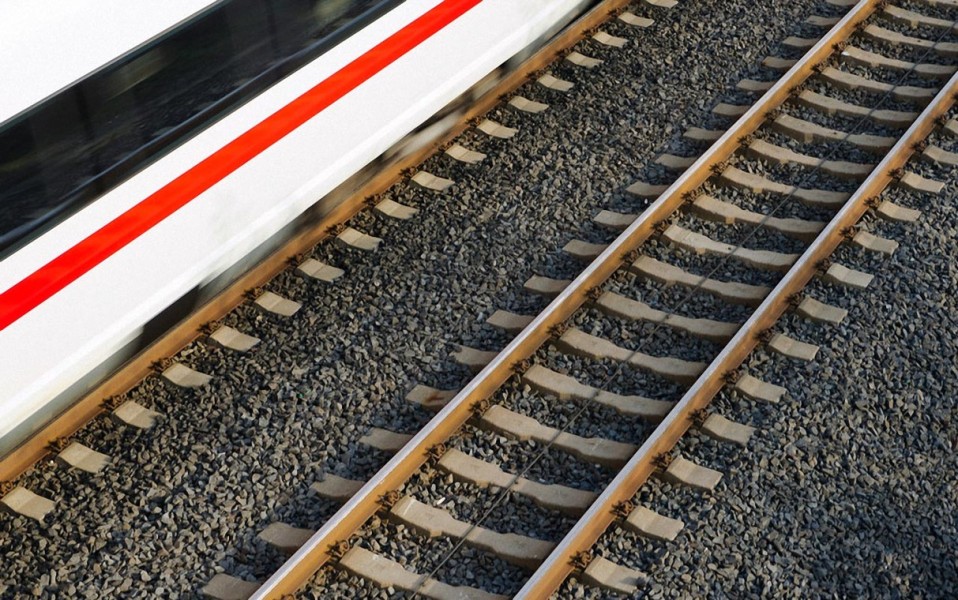
Germany


DB Regio AG: Stuttgart S-Bahn alternative concepts
As part of the expansion of the Stuttgart Digital Hub (DKS), the entire fleet of Stuttgart's S-Bahn (SBS) must be converted to ETCS within a defined period. This will reduce the number of vehicles available for scheduled services. Once converted, it will no longer be possible to couple the upgraded vehicles with the existing fleet that has not yet been upgraded.
On this basis, SMA has developed up to 30 different scenarios for the S-Bahn network, highlighting various options, such as adjustments to the service offering, route planning and targeted adjustments to rolling stock. Depending on the scenario and the combination of options selected, a combination of variants can be used to save a varying number of vehicles.
Finally, SMA has compiled a monthly schedule of required and available rolling stock for the various sub-fleets and the total number of available multiple units so that any shortfalls can be identified.
The renovation of the high-performance corridor between Nuremberg, Regensburg and Passau is planned for 2026. It is to be carried out in up to five different stages. During this period, various restrictions will be imposed on the line. As a heavily congested corridor, the Nuremberg–Regensburg–Passau line carries the bulk of freight traffic between the North Sea ports, Austria and South-Eastern Eur...
Continue reading
Germany


DB InfraGO AG: Mobility concept for Nuremberg – Regensburg – Passau
The renovation of the high-performance corridor between Nuremberg, Regensburg and Passau is planned for 2026. It is to be carried out in up to five different stages. During this period, various restrictions will be imposed on the line. As a heavily congested corridor, the Nuremberg–Regensburg–Passau line carries the bulk of freight traffic between the North Sea ports, Austria and South-Eastern Europe. In addition, depending on the section, the line is heavily used by local and long-distance traffic. While many other high-performance corridors have efficient, almost parallel diversionary routes in the immediate vicinity, the Nuremberg–Regensburg–Passau line only has diversionary routes that are either relatively far away, located in neighbouring countries, single-track or are not electrified. SMA supported DB InfraGO AG in evaluating suitable diversionary routes and in planning operational concepts for the diversion traffic.
SMA identified the relevant bottlenecks after identifying suitable diversionary routes. Restrictions regarding train length and weight were also identified for freight transport. In addition to diversions within the DB InfraGO AG network, international routes were also considered.
Planning for the diversionary corridors was based on the objective of maximising capacity utilisation for freight transport, taking into account speed harmonisation in long-distance transport with the aim of routing as much of the expected traffic volume as possible onto the diversion routes.
In the reporting year, SMA reviewed the vehicle plans prepared by bidders in several regional rail transport tendering procedures. Within a very tight project schedule, the task was to check the schedules submitted by the bidders for compliance with the tender specifications, conceptual correctness and innovative approaches. In most cases, SMA was able to confirm the vehicle scheduling, which hel...
Continue reading
Germany

Train operating companies: Review of vehicle roster planning
In the reporting year, SMA reviewed the vehicle plans prepared by bidders in several regional rail transport tendering procedures.
Within a very tight project schedule, the task was to check the schedules submitted by the bidders for compliance with the tender specifications, conceptual correctness and innovative approaches. In most cases, SMA was able to confirm the vehicle scheduling, which helped the bidder in the process of submitting their bid. In addition, SMA's detailed work also identified possible areas for optimisation or questioned these from the perspective of other potential bidders.
SMA carried out the review of the vehicle schedules using the Viriato rostering module, which is tailor-made for this type of conceptual work. For selected sample traffic days, it quickly provides information on all relevant vehicle roster data.
Czech republic
After three years of extensive development work, the feasibility study for the Prague hub was completed in 2024. The final year of the study was dominated by the selection and optimisation of the preferred option – a process that required both the approval and support of all relevant stakeholders and an acceptable technical and economic solution. Additional suburban railway stations in (and partly...
Continue reading
Czech republic


Správa železnic – Czech railway infrastructure manager / Mott MacDonald CZ: Feasibility study for the Prague hub
After three years of extensive development work, the feasibility study for the Prague hub was completed in 2024. The final year of the study was dominated by the selection and optimisation of the preferred option – a process that required both the approval and support of all relevant stakeholders and an acceptable technical and economic solution. Additional suburban railway stations in (and partly under) the city centre were included in the solution for both suburban railway trunk lines, improving access to several central locations and public transport lines. The optimised and widely supported option was assessed positively from an economic and environmental point of view and fulfilled an important prerequisite for the project's approval by the Ministry of Transport.
The results of the study were also reviewed by several external experts and institutions. The study created a solid strategic basis for the upcoming development of the Prague railway hub and thus for the city of Prague itself. The expansion of the Prague transport network with two new suburban railway tunnels has the potential to revolutionise transport patterns and the urban structure of the city and its surroundings. In total, more than 80 km of railway lines, including numerous stations, will be rebuilt to enable the planned systematic timetable.
A key factor in the success of the study was the frequent exchange of information between all parties involved, including the City of Prague, the Central Bohemian Region, the Ministry of Transport, the infrastructure operator and the Association of Freight Transport Companies. SMA contributed to the study as a member of a consortium of five companies.
Austria
Providing resources for rail replacement buses due to engineering works is becoming increasingly difficult as the number of worksites is growing and the availability of a sufficient number of buses and drivers is declining or at least not keeping pace with demand. Standardising alternative timetables should speed up the planning process and enable earlier coordination between worksites, timetables...
Continue reading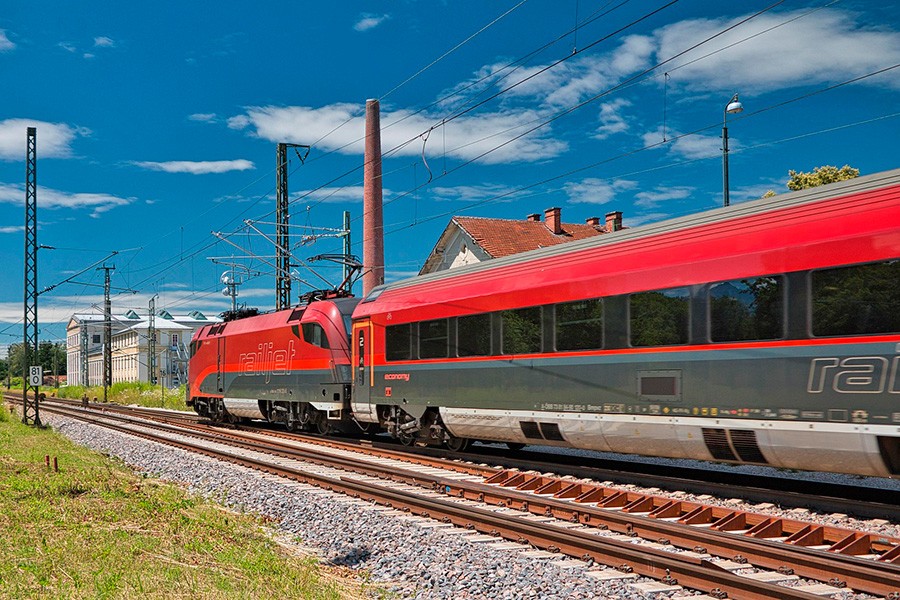
Austria



ÖBB-Personenverkehr AG: Construction timetable concepts in predefined patterns
Providing resources for rail replacement buses due to engineering works is becoming increasingly difficult as the number of worksites is growing and the availability of a sufficient number of buses and drivers is declining or at least not keeping pace with demand. Standardising alternative timetables should speed up the planning process and enable earlier coordination between worksites, timetables and bus resources.
The first step involved preparing rail replacement templates for predefined sections throughout Austria by combining timetable, demand and bus data. The second step involved applying this template database to the actual planned worksites to estimate the bus demand per worksite and aggregate it per region and nationwide. The third step was to review and improve the results based on the experience of regional planners at ÖBB-Personenverkehr AG and ÖBB Postbus AG.
By applying the template method to the worksites planned for 2025 and 2026, it was possible to estimate bus demand across Austria. The evaluations show the base demand for rail replacement buses, the average bus demand and peak demand. This information can now be used to determine the amount of internal resources to be made available and to coordinate the demand for third-party resources with partners at an early stage.
In addition, visualising bus demand per worksite over time makes it possible to identify undesirable overlaps between simultaneous worksites and, where possible, to work with the infrastructure operator to stagger the timing of worksites.
The basic idea behind the Linz Regional City Railway is to connect the suburbs with the city centre of Linz with fast, attractive and direct connections based on the ‘Karlsruhe model’. The route network consists of around 27 km of new track, which will supplement the existing Linz local railway and Mühlkreisbahn lines to Aigen-Schlägl to form a continuous network in the Linz region. Depending on t...
Continue reading
Austria


Rail OOE: Operational and conceptual consulting services
The basic idea behind the Linz Regional City Railway is to connect the suburbs with the city centre of Linz with fast, attractive and direct connections based on the ‘Karlsruhe model’. The route network consists of around 27 km of new track, which will supplement the existing Linz local railway and Mühlkreisbahn lines to Aigen-Schlägl to form a continuous network in the Linz region. Depending on the limits of the suburban railway operation, it will ultimately cover a length of around 80 km. The procurement of suitable tram-train vehicles has already been initiated.
The aim of the study is to answer conceptual and operational questions in order to finalise the current project stage. The basis for this is the tender concept provided by the client. According to this, the lines shown there have a frequency of up to 15 minutes on the outer branches, which is to be superimposed with a 5-minute frequency in the city centre.
Based on an analysis of the plans currently available for RSB Linz, SMA has specified the timetable elements such as journey times, stopping times, train intervals and separation times, as well as the existing planning parameters for Schiene OÖ GmbH & Co. On this basis, the infrastructural requirements such as double-track sections, crossing stations, junctions, interchanges and the track topology of local transport hubs have been derived on the basis of the timetable.
The next steps include planning 24-hour timetables, calculating vehicle rosters and train kilometres, deriving operational system elements such as suitable workshops or stabling facilities, planning two intermediate concepts including calculating vehicle requirements, and considering contingency plans.
The work will be completed in 2025.
Netherlands
The Northern Netherlands Deltaplan development programme includes three projects to improve the public transport system: the new Lelylijn line (Amsterdam–Groningen), the reactivation and partial reconstruction of the Nedersaksenlijn line (Groningen–Hengelo) and the expansion of the existing rail network. As part of the ‘Expansion of the existing network’ programme, the Deltaplan project team, in...
Continue reading
Netherlands

Provinces of Groningen, Friesland, Drenthe and Overijssel: Delta Plan North Netherlands - improving the existing rail network
The Northern Netherlands Deltaplan development programme includes three projects to improve the public transport system: the new Lelylijn line (Amsterdam–Groningen), the reactivation and partial reconstruction of the Nedersaksenlijn line (Groningen–Hengelo) and the expansion of the existing rail network.
As part of the ‘Expansion of the existing network’ programme, the Deltaplan project team, in collaboration with various interest groups, has defined several lines to achieve the overall development goal. The lines differ in particular in the completion of two structuring infrastructure projects: the Lelylijn and the Niedersachsenlijn.
SMA has translated these lines into timetable concepts accurate to the minute:
– Definition of the functional requirements for the infrastructure improvements needed for the proposed routes, especially using track plans.
– Evaluation of the quality of the timetable service achieved in terms of journey times, transfer times, frequencies, etc. A timetable export has enabled an assessment of transport demand.
– Determination of the amount of rolling stock required by an operator to produce the timetable. This is an important input for calculating operating costs and the required depot capacity.
In close consultation with the clients and ProRail, SMA defined the initial situation, taking into account other projects (Lelylijn, Nedersaksenlijn, Wunderline Groningen – Bremen) and the planning parameters, so that the study is comparable or compatible with other studies or developments.
The study has provided a comprehensive overview, highlighting the various options for each line: different service targets and timetable structures require different infrastructure improvements. The results form the basis for numerous follow-up studies: feasibility and costs of the improvements, demand potential, accessibility, development KPIs.
Switzerland
As part of preparations for the 2026 report to the Federal Parliament on rail expansion in the STEP process, SBB has commissioned the Federal Office of Transport (FOT) to conduct a preliminary study on capacity expansion at the Basel hub (VKKB). The aim is to obtain reliable information and a firm basis for the decision-making process and further project planning for infrastructure at the Basel hu...
Continue reading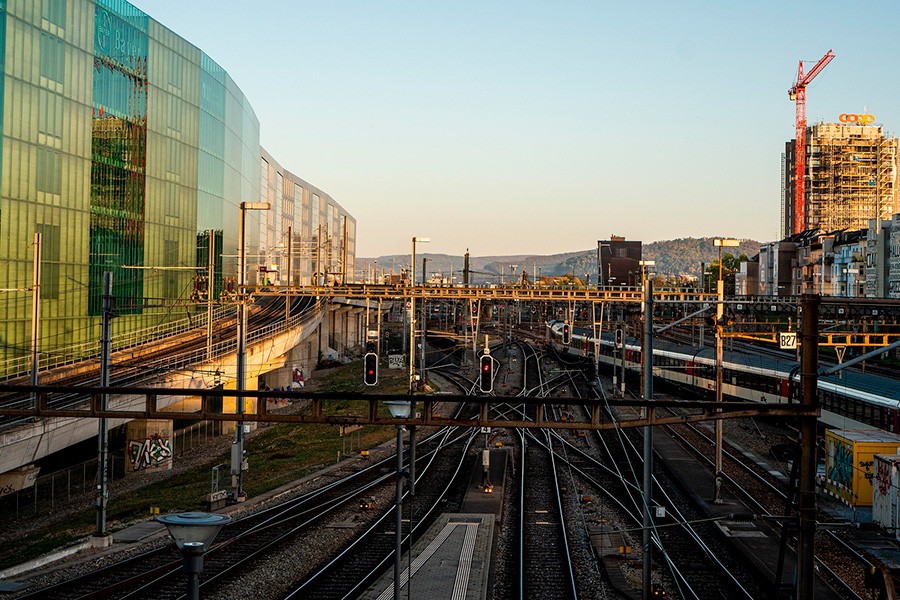
Switzerland




SBB infrastructure: preliminary investigation into capacity expansion at the Basel hub
As part of preparations for the 2026 report to the Federal Parliament on rail expansion in the STEP process, SBB has commissioned the Federal Office of Transport (FOT) to conduct a preliminary study on capacity expansion at the Basel hub (VKKB). The aim is to obtain reliable information and a firm basis for the decision-making process and further project planning for infrastructure at the Basel hub. The study covers the following projects: the core section with the new Basel Mitte and Basel Klybeck stops, Basel SBB railway station with an underground station, Basel Bad Bf with or without an underground station, and Basel St. Johann, including the associated line extensions. These infrastructure projects were previously identified in the ‘Basel hub configuration’ study as being conducive to the optimal long-term development of the service.
SMA supported SBB in various areas of this work. This particularly included ensuring that transport requirements were met, among other things by reviewing the operational impact of adjustments to the infrastructure topology. Another key element was the development of an implementation sequence that would enable transport to develop in a sensible manner, taking into account the construction requirements. Work was also carried out to ensure efficient rail operations both in the target state and during the interim phases, which is a key aspect for operations in the Basel hub. Finally, the system boundaries had to be defined in greater detail, as these are crucial for the functioning of cross-border transport (in particular the trinational Basel S-Bahn).
Based on this preliminary study, initial projects or further preliminary studies for individual elements can now be launched in according to priorities and customer benefits.
The trinational region of Basel (Switzerland, Germany, France) intends to expand the S-Bahn into an efficient system with more frequent services and cross-city lines. Due to the additional rolling stock required, additional capacity will be needed for service and storage facilities in the trinational Basel S-Bahn network. Early coordination between all parties involved and securing the land for t...
Continue reading
Switzerland

Basel metropolitan area: stabling and maintenance facilities for the trinationally integrated Basel S-Bahn
The trinational region of Basel (Switzerland, Germany, France) intends to expand the S-Bahn into an efficient system with more frequent services and cross-city lines.
Due to the additional rolling stock required, additional capacity will be needed for service and storage facilities in the trinational Basel S-Bahn network. Early coordination between all parties involved and securing the land for the facilities are important factors for the successful and timely implementation of the S-Bahn development. SMA has developed the relevant basis for AggloBasel.
SMA first developed fleet concepts using different approaches, such as a standard fleet or differentiation according to composition length and country compatibility and assessed them in terms of service and operation. The operating concept (operating hours, train lengths depending on demand patterns), the maintenance concept (frequency and duration of maintenance tasks such as operational maintenance, heavy maintenance, exterior/interior cleaning, etc.) and the number of locations also influence future infrastructure requirements. These factors were then used to determine the maintenance infrastructure requirements and the number of sidings needed.
In an in-depth analysis of selected locations (based on the results of a separate spatial planning and environmental study), SMA examined the timetable feasibility (route capacity for vehicle arrival and departure) and economic efficiency (minimisation of empty runs, exploitation of economies of scale and synergies).
The results were used to carry out an overall evaluation of the location options to be pursued further.
The service concept for the 2035 expansion stage (AS) of the railway infrastructure as part of the STEP process is currently being revised and consolidated in preparation for the 2026 report to Parliament, as important factors have changed, in particular the decision by SBB to abandon tilt compensation in long-distance rolling stock. In addition, the 2026 report will examine the initial elements o...
Continue reading
Switzerland




FOT (Federal Office of Transport): Task force Task force for the 2026 report – service and infrastructure planning
The service concept for the 2035 expansion stage (AS) of the railway infrastructure as part of the STEP process is currently being revised and consolidated in preparation for the 2026 report to Parliament, as important factors have changed, in particular the decision by SBB to abandon tilt compensation in long-distance rolling stock. In addition, the 2026 report will examine the initial elements of major long-term projects in accordance with the federal resolution on AS 2035. There are also new findings on anticipated robustness problems, which SBB intends to improve by adjusting minimum journey times, stopping times, interchange times, turnaround times and the allocation of reserves. Further action is needed with regard to the accessibility of freight transport facilities and to ensure that the service can be provided.
SMA supports the FOT within the specialist support unit in the area of service and infrastructure planning. This includes a wide range of tasks. This includes monitoring, validating and reviewing the rail transport service, infrastructure and operational concepts developed by infrastructure operators. SMA also proposes approaches for optimising the overall rail system and assesses service quality, e.g. by means of journey time analyses. SMA develops detailed service and infrastructure concepts for specific issues. These include, for example, evaluation criteria, particularly for the numerous metre-gauge private railways, for which transport connections to standard gauge networks must be ensured. Finally, SMA provides technical and organisational support to the working groups.
The canton of Nidwalden reviews its public transport strategy every four years, setting out the strategic framework for developing public transport services based on criteria of economic efficiency, demand and service quality. The legal basis for implementing the public transport strategy is the Public Transport Promotion Act (ÖVG). The ÖVG stipulates that the economic efficiency and demand for e...
Continue reading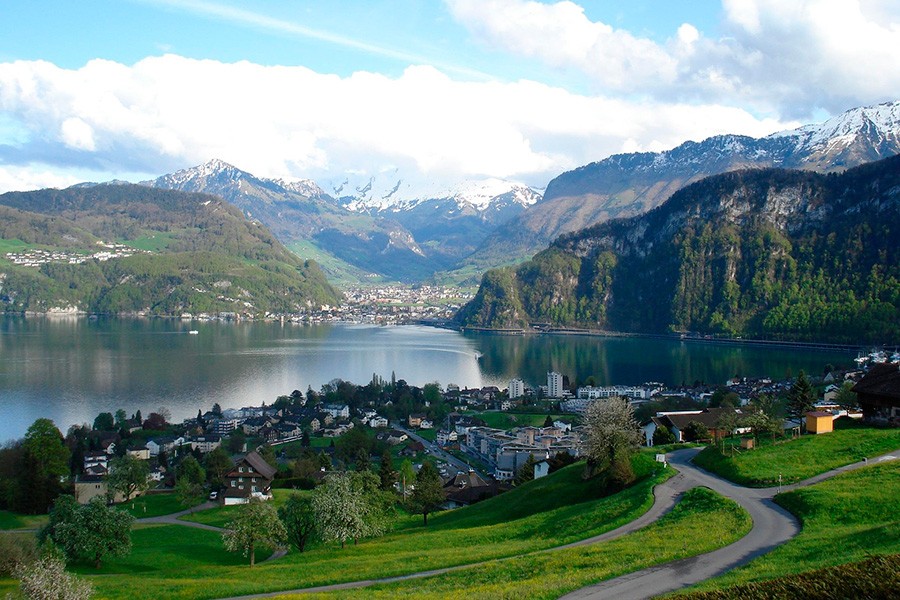
Switzerland

Review and update of the 2025–2028 public transport strategy for the canton of Nidwalden
The canton of Nidwalden reviews its public transport strategy every four years, setting out the strategic framework for developing public transport services based on criteria of economic efficiency, demand and service quality. The legal basis for implementing the public transport strategy is the Public Transport Promotion Act (ÖVG).
The ÖVG stipulates that the economic efficiency and demand for each individual line must be reviewed annually. If the cost recovery ratio and service efficiency of a line fail to meet the specified thresholds twice in succession within a four-year period, the canton must review them.
The challenges for public transport in the canton of Nidwalden come from high demand and the need to match this with services to Lucerne. At the same time, connecting and consolidating demand in rural and scattered settlements requires an economically viable public transport service.
On behalf of the canton of Nidwalden, SMA analysed the existing public transport situation. Important aspects were traffic development, the associated changes in demand and an analysis of the quality of connections to residential and employment areas using a geographical information system. The investigation of travel routes to tourist destinations also provided valuable insights.
This was followed by an assessment of the actions required and the setting of service targets. Politically defined requirements regarding service, quality and financing played a key role in this process. Spatial planning priorities for residential and employment areas and long-term demand forecasts were also considered as indicators of necessary service adjustments.
Based on the identified priorities for action, around 25 optimisation approaches for rail, bus and cable car services were developed. Various strategic directions were identified and their advantages and disadvantages analysed. In collaboration with the transport companies, the approaches were further refined so that concrete recommendations for implementation in the period 2025–2028 could ultimately be made to the cantonal government.
As part of the redevelopment and redesign of a line through a town, SMA supported the Office for Transport and Civil Engineering of the Canton of Solothurn and Aare Seeland mobil (asm) in investigating various issues. The following four topics had to be addressed: 1. Comparison of three infrastructure options in terms of journey times. 2. Examination of the three options and analysis of the impact...
Continue reading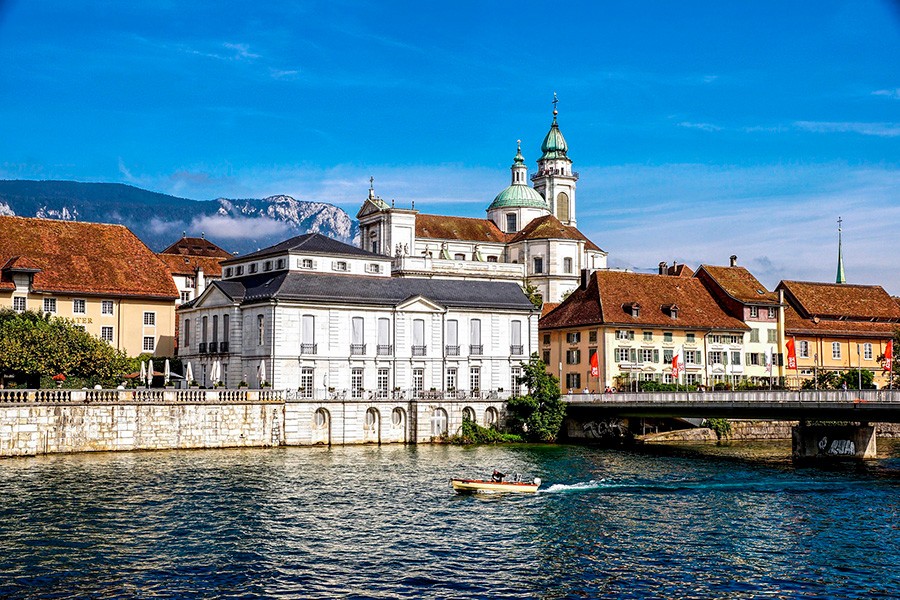
Switzerland


Canton Solothurn : Solothurn – Oensingen Simulation
As part of the redevelopment and redesign of a line through a town, SMA supported the Office for Transport and Civil Engineering of the Canton of Solothurn and Aare Seeland mobil (asm) in investigating various issues. The following four topics had to be addressed:
1. Comparison of three infrastructure options in terms of journey times.
2. Examination of the three options and analysis of the impact on rail operations (stability) in the AK35 timetable horizon.
3. Examination of whether journey times could be reduced at other points along the Solothurn–Oensingen route.
4. Simulation of the impact of different types of rolling stock on journey times.
For the simulation, a comprehensive model of the approximately 16.5 km long Solothurn – Oensingen route was first created. The OpenTrack simulation software was used for this purpose. After calibrating the model using current running times and verifying it with the customer, three different infrastructure states and the planned future timetable were prepared.
Based on this information, the different infrastructure conditions were simulated and analysed with the future timetable. For the delay analysis, publicly available delay data was evaluated and used as delay distributions at various points along the route. This was followed by a multiple iterations simulating a disrupted timetable that included ten different initial delays. The final analysis highlighted the advantages and disadvantages of the individual infrastructure variants and served as a basis for a decision on the best option.
In the third step, various sections of the route were identified that were suitable for possible speed increases. Modifications to the simulation model and the potential vehicle types revealed the scope for reducing journey times on the various sections.
Overall, the simulation model provided a digital basis for investigating a wide range of infrastructure, service and vehicle-related issues.
The Lausanne–Echallens–Bercher (LEB) line is currently experiencing strong growth in passenger numbers, driven by numerous service and infrastructure improvements implemented in recent years. In 2023, as part of its ‘Vision 2050’ initiative, the Canton of Vaud selected the project to extend the LEB network via the Cheseaux–Renens branch as one of the schemes to be explored in greater depth. The L...
Continue reading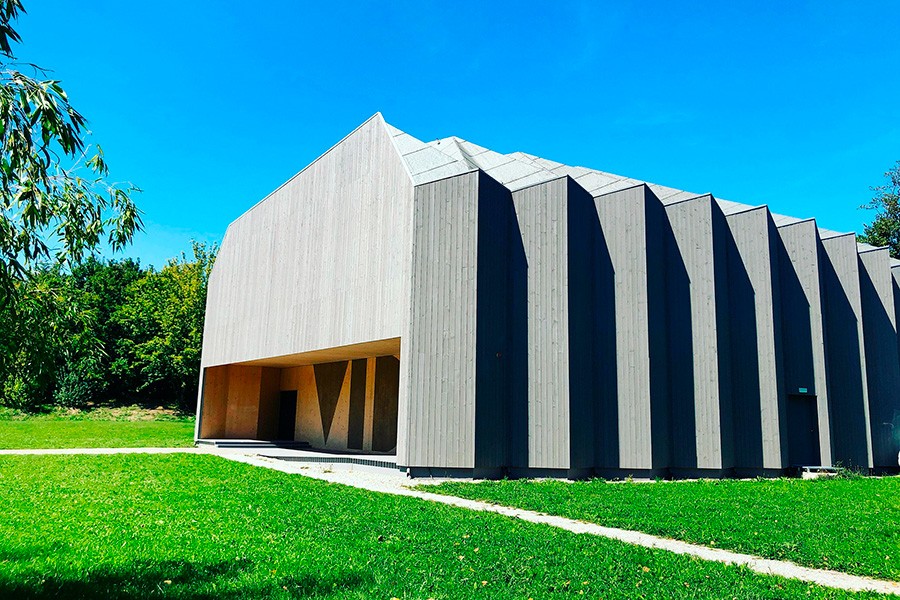
Switzerland


LEB: Assistance with the further development of Vision 2050
The Lausanne–Echallens–Bercher (LEB) line is currently experiencing strong growth in passenger numbers, driven by numerous service and infrastructure improvements implemented in recent years.
In 2023, as part of its ‘Vision 2050’ initiative, the Canton of Vaud selected the project to extend the LEB network via the Cheseaux–Renens branch as one of the schemes to be explored in greater depth. The LEB has commissioned SMA to study the new line, taking into account recent developments in the network, both in terms of infrastructure and operations, by studying and evaluating different timetable scenarios for the selected Cheseaux–Renens branch.
The study examined the positioning of stations in relation to opportunities and catchment areas in order to optimise service and ridership. The route alignment was also subject to several iterations to optimise journey times and ensure better connections with the existing network. In addition, all scenarios were analysed from a robustness perspective.
In addition, a demand potential study was carried out to estimate passenger flows on the current line and on the new branch by 2050. This analysis took into account socio-economic developments in the region as well as improvements in public transport services.
Finally, several options for the location of depots and workshops were analysed and compared, enabling recommendations to be made.
The Vision 2050 strategy, launched by the Canton of Vaud in June 2020, resulted in an initial target version defining the planned increases in rail services and the infrastructure required to support them. However, this ambitious vision involves significant investment in infrastructure. The strategy was officially published in early 2024. Following this publication, the Canton wanted to develop a...
Continue reading
Switzerland





Canton of Vaud – Initial stages of the Vision 2050 project and preparation of the next proposal
The Vision 2050 strategy, launched by the Canton of Vaud in June 2020, resulted in an initial target version defining the planned increases in rail services and the infrastructure required to support them. However, this ambitious vision involves significant investment in infrastructure. The strategy was officially published in early 2024.
Following this publication, the Canton wanted to develop an optimised, phased vision that would identify the first stages of the project while reducing the necessary investment. The aim was to preserve the core service ambitions at cantonal and regional level and for the mainline network. These initial steps were also intended to prioritise service development requests for the next PRODES federal government package.
The Lake Geneva region, and Geneva in particular, will undergo numerous changes in terms of rail services and infrastructure in the coming years. The Federal Office of Transport (FOT), in collaboration with the Cantonal Transport Office (OCT), wishes to prepare the next stages of development for national, regional and international traffic, for both passengers and freight. At the request of SBB In...
Continue reading
Switzerland




SBB Infrastructure, Geneva 2050+
The Lake Geneva region, and Geneva in particular, will undergo numerous changes in terms of rail services and infrastructure in the coming years. The Federal Office of Transport (FOT), in collaboration with the Cantonal Transport Office (OCT), wishes to prepare the next stages of development for national, regional and international traffic, for both passengers and freight. At the request of SBB Infrastructure, which is responsible for the study, SMA, in partnership with two other firms, has been commissioned to establish a common vision shared by the various stakeholders in Geneva's rail network and services for the long term (2050+). This approach aims to inform the definition of service objectives and the infrastructure investments required as part of the planning for the next PRODES proposal.
The study was carried out in two phases. The first phase focused on an analysis of overall demand, including at the Greater Geneva level, to assess which areas within the study perimeter could benefit from new or expanded rail services in the long term. The ambitions for modal shift are considerable, which will also require the development of the core network. Numerous service scenarios were therefore studied and compared, testing different combinations of mainline and regional traffic. In the second phase of the study, the most promising scenarios were examined in greater detail in terms of timetables, operation and implementation, and the necessary infrastructure was identified.
These elements will serve as a basis for future studies to further develop the selected scenarios and ensure that solutions are implemented that are appropriate for the long-term challenges of the Geneva metropolitan area's rail network.
The canton of Geneva is pursuing a strategic development of its public transport network. In this context, SMA was commissioned to conduct a study on the planning of a new, high-performance rail-based public transport line. The study is intended to form a basis for the canton's long-term mobility strategy and examine the extent to which a new line could relieve existing axes and improve multimodal...
Continue reading
Switzerland



Canton of Geneva: Study of a new public transport line for the cantonal strategic vision
The canton of Geneva is pursuing a strategic development of its public transport network. In this context, SMA was commissioned to conduct a study on the planning of a new, high-performance rail-based public transport line. The study is intended to form a basis for the canton's long-term mobility strategy and examine the extent to which a new line could relieve existing axes and improve multimodal connections.
The study took into account urban development, capacity bottlenecks, future demand trends, possible routes and synergies with planned infrastructure measures. The results will be incorporated into the political decision-making process for the canton's future transport strategy.
France
At the end of 2022, SMA carried out an in-depth assessment of the overall public transport network within the Syndicat Intercommunal d'Aménagement du Chablais (SIAC) area to identify areas for improvement. In mid-2023, this analysis resulted in a strategic roadmap incorporating several actions aimed at optimising rail and road public transport services, improving coordination between the various n...
Continue reading
France



SIAC: Strategy for improving road transport services
At the end of 2022, SMA carried out an in-depth assessment of the overall public transport network within the Syndicat Intercommunal d'Aménagement du Chablais (SIAC) area to identify areas for improvement. In mid-2023, this analysis resulted in a strategic roadmap incorporating several actions aimed at optimising rail and road public transport services, improving coordination between the various networks, strengthening interchanges and connections, and rethinking pricing.
Following on from this work, SMA supported the SIAC by proposing scenarios for optimising road public transport services to enable a coherent integrated multimodal service. The study took into account all modes of transport, including rail, boat, urban and interurban buses, and cross-border services.
Based on the assessment, several scenarios for improving transport services were developed. The focus was on improving the quality and clarity of services and timetables, coordinating and integrating the various networks, and creating optimised connections between buses, coaches, trains and boats. These proposals were tailored for peak and off-peak hours. They were developed in close collaboration with the SIAC member authorities and evaluated at each stage according to specific criteria, such as journey times, frequencies, connections and rolling stock requirements, to ensure that the number of buses used remained close to the current level.
At the same time, SMA also carried out several additional tasks, including an analysis of tourist needs and a review of the current situation and fare benchmarking, in order to support SIAC in its discussions and preparations for future talks on this subject.
As part of the launch of a new, more frequent service between Grasse/Les Arcs and Ventimiglia in 2025, SNCF SUD AZUR wanted to anticipate operational issues and offer clear and rapid solutions to any potential disruptions. SMA carried out a study to this end during 2024. The 2-hour systematic model and the 24-hour JOB grid, as well as the 24-hour GOVs, were reconstructed in Viriato using SIPH exp...
Continue reading
France


SNCF TER SUD AZUR: Assistance with meeting the robustness requirements of the tender
As part of the launch of a new, more frequent service between Grasse/Les Arcs and Ventimiglia in 2025, SNCF SUD AZUR wanted to anticipate operational issues and offer clear and rapid solutions to any potential disruptions.
SMA carried out a study to this end during 2024. The 2-hour systematic model and the 24-hour JOB grid, as well as the 24-hour GOVs, were reconstructed in Viriato using SIPH exports . The most at-risk consecutive trains were identified. By analysing delays and incidents in the 2024 timetable, disruption scenarios were identified for each new service type, and contingency plans were proposed describing standard scenarios for returning to normal, including partial cancellations where necessary and minimising the impact on operations and customers. Finally, the impact of one of these disruption scenarios on staff rosters was tested to identify potential risks and weaknesses in the rostering system.
The study identified realistic solutions in terms of operations and the specific constraints of each station, particularly at terminus stations, and considered the customer aspect, identifying possible transfers to other modes of transport in the event of a prolonged service interruption on part of the network.
The Provence-Alpes-Côte d'Azur (PACA) region has commissioned SMA to provide support with two projects for the development of the region's rail network. The first assignment focuses on optimising local rail services (LDFT) in order to develop a long-term vision based on a detailed assessment of travel demand, current services and the state of the infrastructure. A benchmark of innovative solution...
Continue reading
France

Région Sud PACA : Assistance with local transport services and the Nouvelle Provence Côté d'Azur line
The Provence-Alpes-Côte d'Azur (PACA) region has commissioned SMA to provide support with two projects for the development of the region's rail network.
The first assignment focuses on optimising local rail services (LDFT) in order to develop a long-term vision based on a detailed assessment of travel demand, current services and the state of the infrastructure. A benchmark of innovative solutions was carried out, covering aspects of services, timetables, rolling stock and infrastructure, particularly in terms of signalling. An in-depth analysis was also conducted on the decarbonisation of rolling stock and the NextRegio signalling system to assess their potential for application in the region. Finally, this work provided input for discussions on the changes needed in preparation for the 2030 Winter Olympic and Paralympic Games, several of whose venues are located in Provence-Alpes-Côte d'Azur.
The second assignment concerns support for the deployment of the Ligne Nouvelle Provence Côte d'Azur (LNPCA). SMA is assisting the Region in analysing project-related documents, ensuring alignment with regional objectives and proposing optimisations. This support began with a clarification of the service objectives and the different phases of the project, which helped guide the analysis of the reports. At the same time, several specific issues were explored in greater depth, including the organisation of passenger services, compatibility with other services (freight and main lines) and the impact of the construction phases on TER operations.
Through these two projects, SMA is supporting the Sud region in optimising its rail network by anticipating strategic challenges and ensuring consistency between future projects and the region's needs.
Saint-Étienne Métropole (SEM) is committed to improving the performance of its public transport network, particularly its tram and bus lines. With three tram lines in operation, line T1, which runs at a high frequency of 3 minutes, is now operating at full capacity during certain times of the day. To address these challenges, SMA has been commissioned to carry out a detailed assessment of the tram...
Continue reading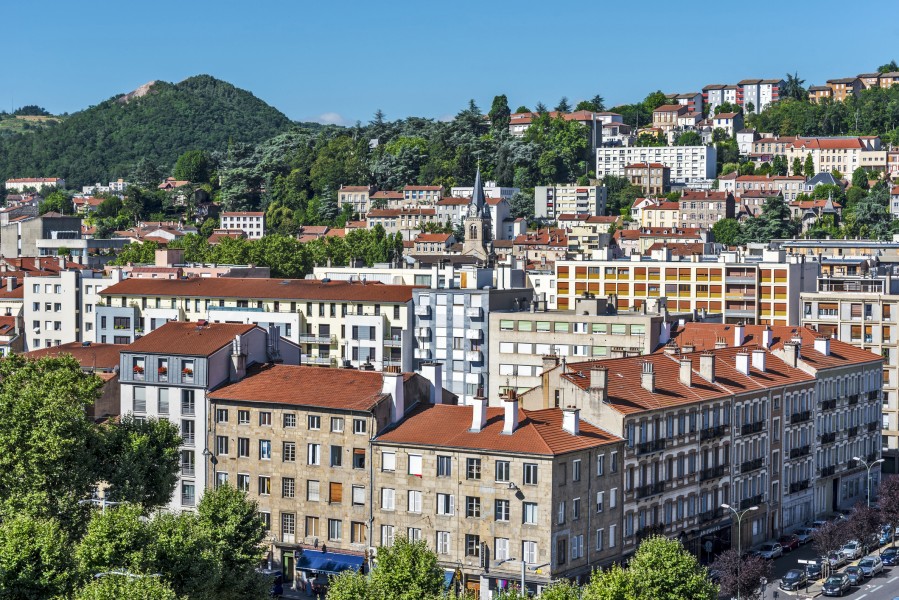
France

St-Etienne Metropolitan Area: Improving the performance of bus and tram lines
Saint-Étienne Métropole (SEM) is committed to improving the performance of its public transport network, particularly its tram and bus lines. With three tram lines in operation, line T1, which runs at a high frequency of 3 minutes, is now operating at full capacity during certain times of the day. To address these challenges, SMA has been commissioned to carry out a detailed assessment of the trams' current operation in terms of ridership, timetables and punctuality. In this context, and taking into account the network's future development, SMA has drawn up proposals for optimising the operating plan in the short and medium term, including, where necessary, infrastructure adjustments while retaining the current rolling stock fleet.
To the same end, SEM wishes to improve the performance of its bus network, many of whose routes converge on the city centre. SMA has therefore conducted an initial study on the M3 line, analysing ridership, timetables and punctuality, and has proposed concrete adjustments in collaboration with partners: revision of timetables, implementation of prioritised traffic lights, creation of bus lanes and other optimisation measures, both in terms of operations and urban planning. Building on these results, SEM now aims to extend this approach to other bus lines, while assessing the impact of the improvements made compared to the initial situation.
Through these studies and recommendations, Saint-Étienne Métropole is continuing to pursue its goal of a more efficient and responsive network that is better suited to the needs of users.
As part of the Regional Express Services (SERM) initiative launched throughout France, SMA is assisting the Société des Grands Projets (SGP) with the SERM project in Mulhouse and the Basel-Mulhouse connection, which has been approved by the French government. The study consists of two phases, beginning with an assessment and analysis of the area, followed by the development of scenarios for impro...
Continue reading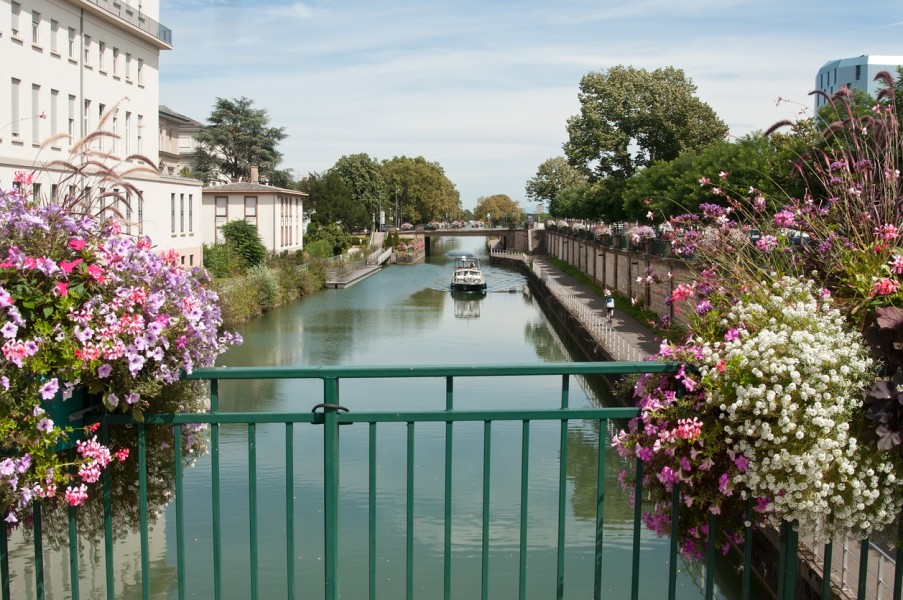
France





SGP: Mulhouse SERM feasibility study of the overall plan
As part of the Regional Express Services (SERM) initiative launched throughout France, SMA is assisting the Société des Grands Projets (SGP) with the SERM project in Mulhouse and the Basel-Mulhouse connection, which has been approved by the French government.
The study consists of two phases, beginning with an assessment and analysis of the area, followed by the development of scenarios for improving the service in consultation with stakeholders. The scenarios are then evaluated through a pre-feasibility study to put the expected costs and passenger numbers into perspective, with the aim of identifying a preferred scenario for further investigation.
All aspects of public transport are addressed as part of this process, i.e. primarily rail and road services, but also interfaces between different modes, passenger information, carpooling, pricing and ticketing, amongst other issues.
These changes in service provision should help to increase the modal shift towards public transport and non-motorised modes of transport, while supporting land-use planning initiatives.
The Service and Infrastructure Platforms system, led by the French government, enables SNCF Réseau to plan track capacity and availability and adjust infrastructure in line with medium- and long-term needs, while taking into account infrastructure maintenance requirements. In this context, the 5- and 10-year reference operating plans (PER) and emerging operating plans (PEE) are essential tools tha...
Continue reading
France

SNCF Réseau : Support in developing operational plans for the Grand Est region
The Service and Infrastructure Platforms system, led by the French government, enables SNCF Réseau to plan track capacity and availability and adjust infrastructure in line with medium- and long-term needs, while taking into account infrastructure maintenance requirements. In this context, the 5- and 10-year reference operating plans (PER) and emerging operating plans (PEE) are essential tools that are currently being developed.
For several years, SMA has been assisting SNCF Réseau in developing these operating plans in the Grand Est region. This assistance has covered a wide range of topics, including:
– Support for the preparation of hourly deliverables for the 2-hour PER 2028 framework and for consultation on the PER 2028 with the Grand Est Region.
– Creation of 2-hour timetable scenarios in the context of a new entrant for high-speed services in the Grand Est region, with a multi-criteria comparative analysis summarising the advantages, disadvantages and limitations of each scenario. The PER 2028 and PEE have been updated to incorporate the selected high-speed scenario.
– Use of a capacity calculation algorithm to assess at a macroscopic level the solutions needed to implement different service scenarios for the SERM Lorraine-Luxembourg, iteration of these service scenarios to arrive at a preferred scenario for further study as part of the development of the PEE for the long term.
Belgium
The Belgian government has commissioned the Federal Public Service (SPF) Mobility and Transport to develop a long-term rail operating plan in the form of a systematic timetable. The aim of this initiative is to propose a development plan for the Belgian rail network in terms of infrastructure based on the systematic timetable, which is a first at federal level in Belgium in collaboration with Infr...
Continue reading
Belgium



SPF Mobility and Transport: Long-term railway operating model
The Belgian government has commissioned the Federal Public Service (SPF) Mobility and Transport to develop a long-term rail operating plan in the form of a systematic timetable. The aim of this initiative is to propose a development plan for the Belgian rail network in terms of infrastructure based on the systematic timetable, which is a first at federal level in Belgium in collaboration with Infrabel and SNCB, but also to assess the feasibility of political ambitions in terms of rail freight (doubling of transport volumes) and the future structure of passenger services.
The study began with an international benchmarking exercise on the conceptual and technical principles used in various European countries in order to define them for the study and identify two possible scenarios for the Belgian network. These two scenarios, developed in the form of a national timetable, are:
– The first is based on a ‘Dutch’ passenger service model with only two types of passenger products (Intercity/Omnibus), thereby promoting high frequencies (15 minutes) and reducing the need for transfer hubs.
– The second is based on a ‘Swiss’ passenger service model, incorporating more passenger services types (Interregio or accelerated local services), enabling diversification of the service offering by relying more on transfer hubs with a lower frequency (30 minutes).
The assessment of these two scenarios in terms of the service offered (journey times, number of services, number of connections, robustness, etc.) and the costs of the necessary infrastructure, as well as demand (established in collaboration with partners), has provided many lessons, mainly that a mixed scenario – with high frequencies in dense areas and efficient transfer hubs outside these areas – is likely to provide the best balance between investment and benefits.
On this basis, an initial long-term scenario proposal was developed, combining the advantages of both scenarios into a national operating plan (systematic timetable). This proposal was finalised at the end of 2024. On completion of the study, this initial proposal will be reviewed following feedback from the main Belgian rail operators (Infrabel and SNCB), and two implementation phases will be defined to serve as a roadmap for the development of the network. This will be accompanied by an identification of the prerequisites for success, the parts of the network where structural alternatives still exist, and the arrangements for multimodal integration.
International
With a view to boosting growth and future competition on its international routes, Eurostar called on SMA to guide the development of its long-term timetable (for 2030-2035). This initiative aims to identify capacity constraints arising from the various specific features of the international network, station operations and different approaches to rolling stock maintenance. The ultimate goal is to...
Continue reading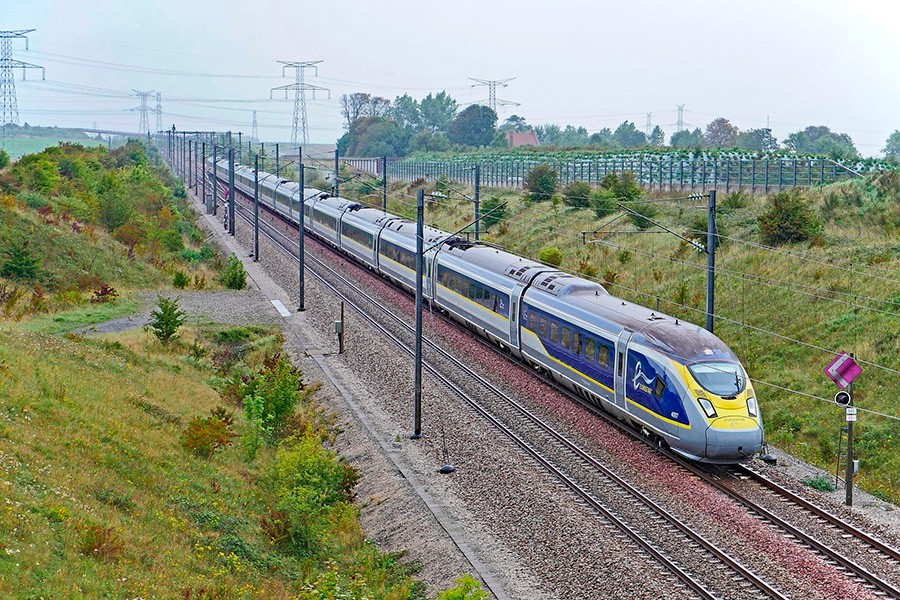
International


Eurostar, Development of the long-term timetable
With a view to boosting growth and future competition on its international routes, Eurostar called on SMA to guide the development of its long-term timetable (for 2030-2035). This initiative aims to identify capacity constraints arising from the various specific features of the international network, station operations and different approaches to rolling stock maintenance. The ultimate goal is to determine the size of the rolling stock fleet.
Based on an analysis of developments in the networks used by Eurostar, various scenarios were established to assess the specific effects of certain constraints, such as the potential level of development of competitive offerings, network maintenance by infrastructure managers, and Eurostar's rolling stock maintenance strategies. These different scenarios were then translated into hypothetical timetables for a typical working day, making it possible to deduce the achievable service on the various corridors of the Eurostar core network, as well as the rolling stock requirements and productivity.
The various scenarios developed enabled recommendations to be made in terms of timetable structure and responses to the impacts of external constraints (network maintenance and potential new entrants) and internal constraints (rolling stock maintenance and station operations).
Eurostar provides open access high-speed services between London, Brussels and Paris, as well as between Paris, Brussels, Amsterdam and Germany. For several months, the punctuality of these services has faced significant challenges and has not fully met the company's ambitions. In this context, Eurostar has called on SMA's expertise to conduct an in-depth analysis of the causes of irregularities...
Continue reading
International



Eurostar : Punctuality analyses, recommendations and assistance with the development of the 2025 timetable
Eurostar provides open access high-speed services between London, Brussels and Paris, as well as between Paris, Brussels, Amsterdam and Germany. For several months, the punctuality of these services has faced significant challenges and has not fully met the company's ambitions.
In this context, Eurostar has called on SMA's expertise to conduct an in-depth analysis of the causes of irregularities and to make recommendations aimed at improving operational performance. The objective is twofold: to limit the impact of internal causes and to mitigate as much as possible the effects of external causes over which Eurostar has less control, such as the disruptions encountered in Germany and infrastructure constraints in the Netherlands.
An initial phase of data analysis enabled SMA to develop tools to facilitate the identification and measurement of the knock-on effects of initial incidents (train path conflicts, turnarounds at terminals, etc.). On this basis, Eurostar wanted to take the study further in 2024, particularly in the context of the work being carried out at Amsterdam station.
Building on the lessons learned, the collaboration has been extended to the preparation of the 2025 annual service, which promises to be complex due to numerous constraints, particularly those related to the many infrastructure works on the various networks covered. The aim is to optimise production organisation to promote a sustainable improvement in punctuality.
SMA has established relevant indicators, particularly for analysing the interactions between commercial traffic and rolling stock maintenance. Proposals for rolling rosters have been developed in close coordination with Eurostar's planning teams with the aim of strengthening operational robustness, even under sometimes sensitive operating conditions. The Viriato rolling stock rostering module has been used to explore different scenarios and provide key indicators for monitoring production.




